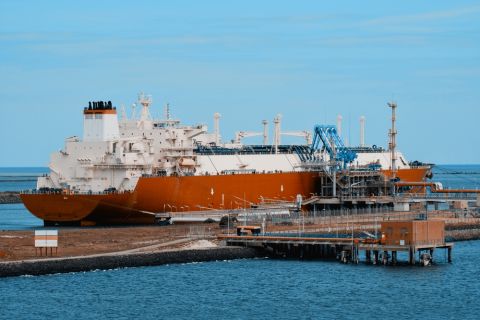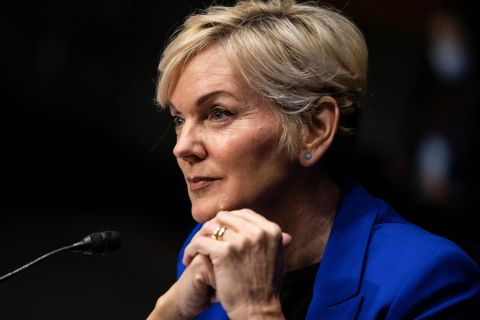Chevron CEO Mike Wirth was the calm corporate executive on a recent conference call with analysts as he fielded questions about Venezuela, especially about a license the company won in October by the U.S. Office of Assets Control (OFAC).
For all the media fanfare generated, General License No. 44 expires in six months and, importantly for Chevron, “doesn’t materially change [the company’s] circumstances,” Wirth matter-of-factly told analysts during the company’s third-quarter 2023 conference call.
“The recent action in [the] new general license issued by OFAC really kind of opens up operating room for others more so than it does for us,” Wirth said. “I think what you’ll see is some more people lifting crude, you’ll see more crude flow to the U.S. I don’t think the impact on our operations really is particularly significant.”
That said, Chevron is the largest international oil company in Venezuela and the main foreign player there, hands down. Arguably, what Chevron does in Venezuela garners more press than state-owned Petroleos de Venezuela (PDVSA) and rightfully so, given the national oil company has been heavily politicized since the mid-2000s.
Let’s not get this wrong. The older OFAC license—General License No. 41, issued on Nov. 26, 2022—coupled with newer General License No. 44 are positives for Chevron. The former allowed Chevron to produce and lift oil and refined products, while No. 44 will allow for payment of invoices for goods and services in Venezuela, among other things.
So, why does that matter to Chevron and Venezuela?
Wirth sees Chevron’s Venezuela production reaching 150,000 bbl/d by year-end 2023. That suggests an increase of about 15% from average third-quarter production of 130,000 bbl/d. In comparison, Chevron produced about 60,000 bbl/d in third-quarter 2022, Wirth said. For what it’s worth, earlier this year Wirth said Chevron produced around 50,000 bbl/d in November 2022 in Venezuela. Take from that what you want.
As it stands, Chevron has boosted production by around 117% under the first general license and could achieve another 54% or so increase in production between now and year-end 2024 if it returns to producing around 200,000 bbl/d — a figure its four joint ventures there were capable of averaging prior to U.S. sanctions imposed in 2019.
Said another way, if Chevron reaches the 200,000 bbl/d mark, it will have boosted production by 233% in about two years. Not bad at all.
Chevron’s production increases alone will definitely help Venezuela boost its average production, which has struggled to surpass the 800,000 bbl/d mark on an ongoing basis. Venezuela produced around 3.23 MMbbl/d in 1997, two years before Hugo Chávez became the country’s president and de facto head of PDVSA.
With 304 Bbbl in proven reserves, the world’s largest, and enough to last more than 1,000 years based on current production, you might ask: Pietro, why doesn’t Chevron go all out on spending to boost production even further? Well, the answer is complicated but can be reduced to a two-word response: political uncertainties.
Chevron has been in Venezuela for more than 100 years and is currently trying to recoup money from the OPEC country while confronting a number of headwinds, including political uncertainties and a now truncated General License No. 44.
As such, I wouldn’t expect Chevron to spend more in Venezuela than necessary. I think Wirth says as much.
“The cash from [rising production] is going to pay legitimate operating expenses, tax and royalties, recover some past dues that we are owed,” Wirth told analysts. “We’re really working on what I would call pretty straightforward field maintenance and things to restore production that aren’t particularly long-cycle or capital-intensive and staying within the kind of cash that’s being generated from those sales in order to fund that.”
OFAC’s logic behind issuing General License No. 44 was related to successful talks last month in Barbados between Venezuela’s ruling party and the opposition. On the surface, concessions made there looked encouraging in terms of Washington achieving its desire for “free and fair” presidential elections in 2024. However, since Venezuela’s president Nicolás Maduro and company have not reversed a mandate that bans the opposition’s leading candidate Maria Corina Machado, Washington is now warning it could change its mind on the new license if things don’t change by year-end.
Talk about certain uncertainties. Well, could you blame Chevron for not putting the pedal to the metal and investing more in Venezuela? I can’t!
Recommended Reading
US EPA Expected to Drop Hydrogen from Power Plant Rule, Sources Say
2024-04-22 - The move reflects skepticism within the U.S. government that the technology will develop quickly enough to become a significant tool to decarbonize the electricity industry.
Hirs: LNG Plan is a Global Fail
2024-03-13 - Only by expanding U.S. LNG output can we provide the certainty that customers require to build new gas power plants, says Ed Hirs.
BWX Technologies Awarded $45B Contract to Manage Radioactive Cleanup
2024-03-05 - The U.S. Department of Energy’s Office of Environmental Management awarded nuclear technologies company BWX Technologies Inc. a contract worth up to $45 billion for environmental management at the Hanford Site.
Watson: Implications of LNG Pause
2024-03-07 - Critical questions remain for LNG on the heels of the Biden administration's pause on LNG export permits to non-Free Trade Agreement countries.
CERAWeek: Energy Secretary Defends LNG Pause Amid Industry Outcry
2024-03-18 - U.S. Energy Secretary Jennifer Granholm said she expects the review of LNG exports to be in the “rearview mirror” by next year.





